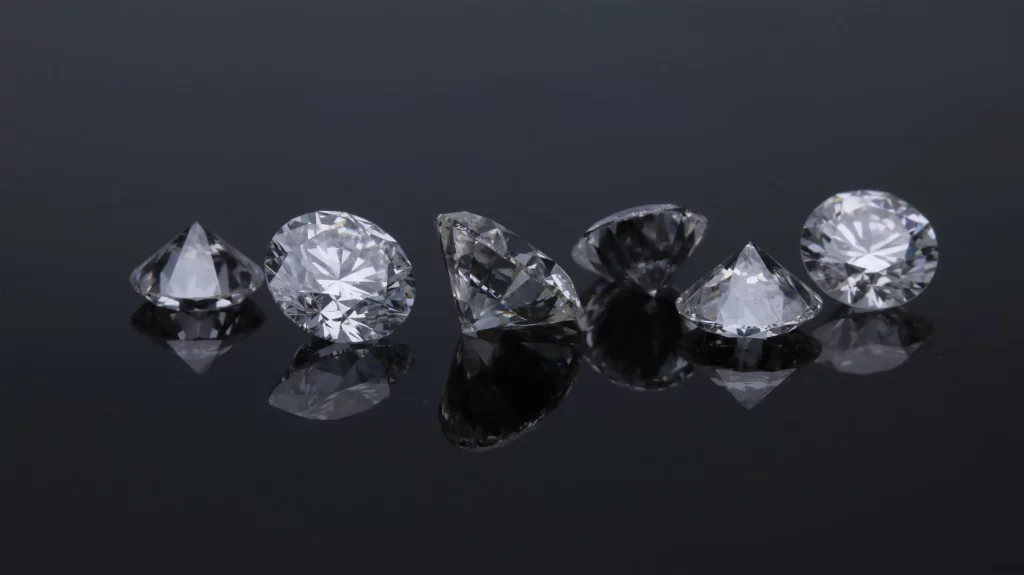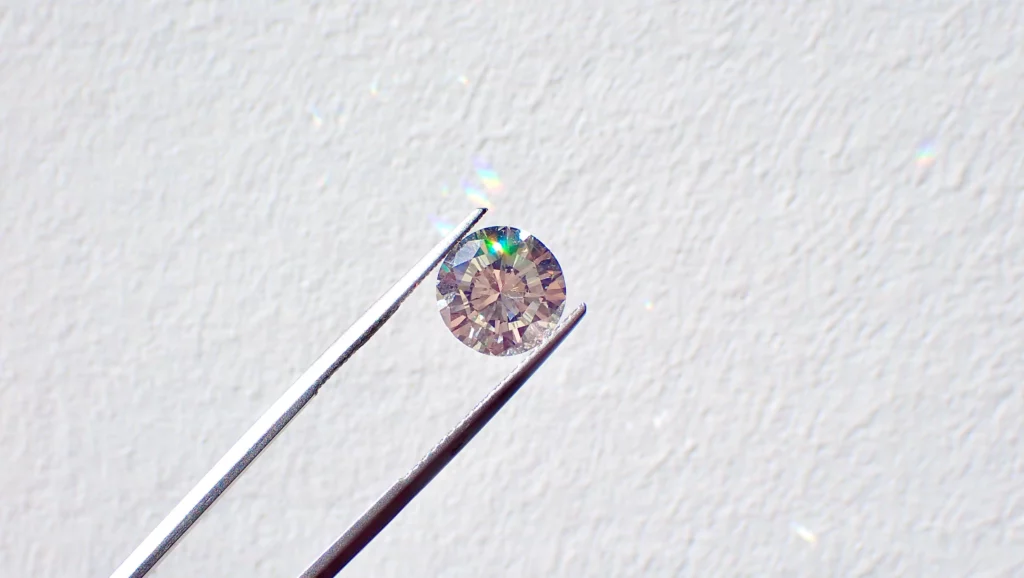When you’re spending money on diamonds, it’s important to know what you’re looking for.
In fact, there are a surprising number of factors and features that can deem a diamond as good quality or bad quality. How can the average person know what they’re buying?
That’s where AGS and GIA come in — two of the most respected labs known for their diamond-grading systems.
But what exactly are AGS and GIA, and what are the differences between the two? Keep reading our AGS vs GIA article to find out how these two labs stack up!

What is AGS?
AGS stands for the American Gem Society.
This association was founded in 1934 by a small group of jewelers who wanted to protect diamond buyers from false advertisements and fraudulent gems and stones.
AGS is a group of leading, prestigious jewelers who meet specific and strict requirements to ensure top knowledge of diamonds as well as other gems and stones.
There are about 3,000 affiliates, retailers, jewelers, and suppliers who have joined the American Gem Society and have dedicated themselves to ethical business practices and consumer protection.
By using a 0 to10 diamond-grading system, AGS makes it simple to read a diamond’s rating chart, even for non-jewelers.
What is GIA?
GIA stands for the Gemological Institute of America.
An older association than AGS, GIA was founded in 1931 and is now one of the leading, most respected non-profit institutes specializing in the knowledge, standards, and education of gems, stones, pearls, and jewelry.
GIA was the first laboratory to implement the 4C System, which has become the worldwide standard for evaluating diamond quality.
The Gemological Institute of America does in-depth research in the field of gemology and continues to study new gem sources to further expand knowledge on gems and stones.
AGS vs. GIA
Keep reading our breakdown of the differences between GIA vs AGS (including grading systems, diamond cut, diamond color, diamond clarity, and diamond carats.
Grading Systems
AGS
AGS has a 0 to 10 grading system with 0 being perfect and 10 being poor.
AGS follows GIA’s 4C System: cut, color, clarity, and carat weight. So when reading a diamond’s chart, the numbers are in the order of the 4Cs.
For example, if a diamond is absolutely perfect and has a grade of 0 in all areas, and weighs two carats, it would be written as 0/0/02.000 carat.
GIA
Meanwhile, GIA offers a more thorough grading chart that’s not just limited to a number scale like AGS is.
GIA’s system is far more known and widely used. The lab has different scales for cut, clarity, and color and produces readable charts and reports for each gem that includes characteristics and proportions.
After all, GIA created the 4C System that has remained the standard for grading diamonds, so it’s no surprise the GIA reports are so in-depth and detailed, especially when it comes to clarity and color.
Diamond Cut
AGS
The AGS scale for determining the quality of a diamond’s cut is as follows:
| 0 | 1 | 2 | 3 | 4 | 5 | 6 | 7 | 8 | 9 | 10 |
| Ideal | Excellent | Very Good | Good | Fair | Poor |
A diamond’s cut is not necessarily the shape of the diamond but the proportions, symmetry, and dimensions. The diamond’s cut indicates how the diamond surfaces are positioned to create sparkle.
Basically, if you want a blinding diamond that will twinkle on your finger, look for a diamond cut with a grade closest to zero.
GIA
Grade-wise, AGS has the upper hand when it comes to reporting diamond cuts.
GIA’s scale is a bit broad and a little too general due to not having any numbers to really comprehend the diamond’s cut grade.
Not to say this scale makes the diamond cut analysis any less reliable or accurate, it’s just more comprehensive to include the number scale like AGS does.
GIA’s cut scale looks like this:
| Excellent | Very Good | Good | Fair | Poor |
The good thing about this scale is that it’s pretty straightforward; it literally tells you the quality.
In that sense, this scale is perfect for those new to the diamond and jewelry scene.
Diamond Color
AGS
A diamond’s color basically refers to the transparency of the diamond. The clearer the diamond, the rarer and typically more expensive.
Some diamonds have a brown or yellow hue, but sometimes that’s due to chemical impurities or defects in the crystal.
To determine a diamond’s color grade, AGS uses this scale:
| 0 | .5 | 1 | 1.5 | 2 | 2.5 | 3 | 3.5 | 4 | 4.5 | 5 | 5.5 | 6 | 6.6 | 7 | 7.5 | 8 | 8.5 | 9 | 9.5 | 10 |
| Colorless | Near Colorless | Faint | Very Light | Light |
The further up the number scale indicates how visible the hue of a diamond is if it has one.
Diamonds with some color are more common than diamonds that are colorless, so if you like warmer tones and hues, you’ll be able to find a light diamond for a good deal.
GIA
On the other hand, GIA uses a letter system to grade diamond color, which is fairly simple to read and understand much like the number scale AGS has.
GIA’s scale ranges from D to Z, with D being colorless and Z representing diamonds with visible yellow and brown hues.
GIA’s scale looks like this:
| D | E | F | G | H | I | J | K | L | M | N | O | P | Q | R | S | T | U | V | W | X | Y | Z |
| Colorless | Nearly Colorless | Faint | Very Light | Light |
This grading scale is helpful because one can determine where exactly on the scale the diamond falls, especially if it’s on the cusp between a grading like nearly colorless and faint.
AGS’s and GIA’s grading scales for diamond color are quite similar, but GIA’s scale has more metrics to reference.
Diamond Clarity
AGS
Diamond clarity pertains to a diamond’s internal characteristics like any blemishes and surface defects.
“Included” is a term used to describe a diamond’s visual appearance on the inside. For consistency, AGS also uses a number scale with 0 being flawless and 10 representing the diamond being most included.
AGS’s diamond clarity scale looks like this:
| 0 | 1 | 2 | 3 | 4 | 5 | 6 | 7 | 8 | 9 | 10 |
| Flawless | Very Very Slightly Included | Very Slightly Included | Slightly Included | Included |
GIA
GIA’s scale for diamond clarity is one of the most used and most recognized standards used by many leading jewelers around the world,
If you’ve shopped for jewelry and have seen terms used like S2 to describe a diamond, that’s the GIA system!
Similar to AGS’s clarity grading system, GIA uses the same methodology without the numbers.
Here’s what GIA’s diamond clarity scale looks like:
| Flawless | Internally Flawless | VVS1 | VVS2 | VS1 | VS2 | SI1 | SI2 | SI3 | I1 | I2 | I3 |
| Very Very Slightly Included | Very Slightly Included | Slightly Included | Included |
As you can see, AGS follows GIA’s grading system quite closely, with just the units of measurements being different.
Diamond Carats
There aren’t many differences when it comes to weighing diamonds between AGS and GIA as both associations include carat weight in their reports.
However, there is slightly more precision in AGS’s grading system since AGS rounds to three decimal points and GIA rounds to two.
The Bottomline
AGS and GIA are both great, accredited, and reputable institutes that are at the forefront of analyzing and grading diamonds and other gems and stones!
These two labs have similar grading systems and reports but differ from the units used to measure such metrics.
We hope this provided more clarification on the differences and similarities between AGS vs GIA. Happy diamond hunting!

